Winging It: Turkey Hunting Tips for Beginners Who Give a Hoot
Don't let inexperience ruin your turkey hunting trip. Get ready to gobble up some success with our beginner's guide to turkey hunting! Learn the basics and improve your chances of a successful hunt. Our beginner's guide to turkey hunting tips will ensure a memorable and successful hunt.
Are you ready to take on the challenge of turkey hunting?
Whether you're a seasoned turkey hunter or a beginner, there's nothing quite like the rush of adrenaline when you hear that gobble and set your sights on your prey.
But as any hunter knows, hunting turkeys requires more than just luck and a trigger finger. To truly succeed, you need expert tips and knowledge on everything from equipment and safety to techniques and hunting etiquette.
In this article, we'll guide you through the ins and outs of successful wild turkey hunting. So grab your gear and embark on your turkey hunting journey with confidence and success by learning how to turkey hunt for beginners.
With our expert tips and guidance, you'll be well on your way to a successful hunt and a truly unforgettable experience of bagging that alluring Eastern Turkey!
Understanding Turkey Hunting
If you're new to the world of hunting, it can seem like an intimidating challenge. But with a little knowledge and preparation, it can be a thrilling and rewarding experience. Let us take a look at the basics of turkey hunting.
A Brief History
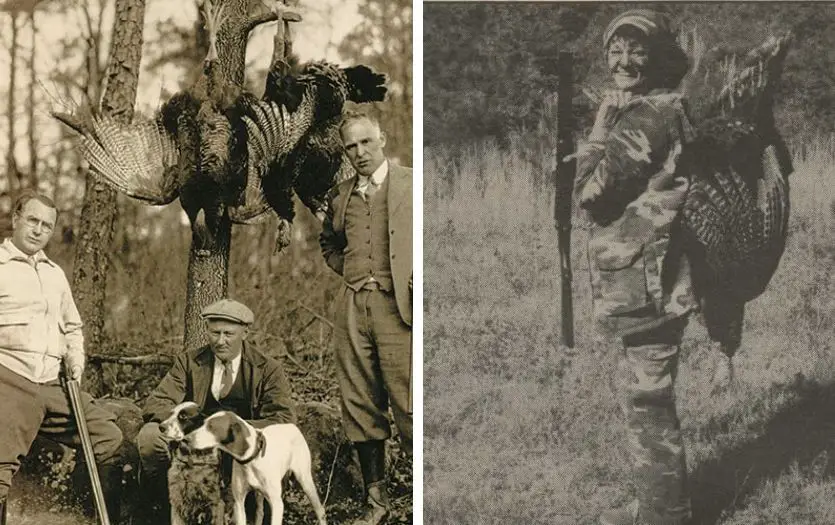
Hunting turkeys has been a part of human history for centuries. Native Americans used calls to attract and hunt wild turkeys, and European settlers quickly adopted these techniques. Over time, hunting became a popular sport and a means of putting food on the table.
However, around the early years of the 20th century, overhunting and habitat destruction almost drove the wild turkey population toward extinction. Conservation efforts and hunters' education slowly helped to restore their numbers.
Today, hunting turkeys remains a popular pastime, with hunters using a variety of methods to take down their prey. From traditional calls and decoys to more modern techniques like blinds and electronic calls, there are many ways to bag a turkey.
Types of Turkey Hunting
There are two main types, depending on the season: fall turkey hunting and spring turkey hunting. Fall hunting typically involves stalking and shooting turkeys as they feed on nuts and berries, while spring hunting is focused on calling and decoying turkeys during their breeding season.
Whichever season you choose, it's important to research the area you'll be hunting in to ensure you're following local hunting regulations and understand the terrain.
Equipment Needed
One of the keys to successful turkey hunting is having the right equipment. Some of the essential gear you'll need includes a shotgun or bow, ammunition (or the correct turkey broadheads), calls and decoys, camouflage clothing, boots, and a hunting vest. And if you like to wait patiently and wait for turkeys to come to you, it is important to have ground blinds and a comfortable low-profile hunting chair.
You'll also need to consider safety equipment like ear protection while shooting and the specified amount of blaze orange clothing while entering the turkey woods, as well as any additional items you might need based on your specific hunting method.
Safety Tips
As with any hunting activity, safety should always be your top priority. Make sure you're familiar with local hunting regulations and always follow safe hunting practices. This includes being aware of your surroundings, ensuring you have a clear shot before firing and wearing appropriate hunters' clothing and safety gear.
It's also important to let others know where you'll be hunting and when you plan to return. Bring a charged phone and a map or GPS, or wear a hunting watch to help you navigate unfamiliar terrain, and always let someone know if your plans change.
Wear camo clothing and dress defensively, and avoid any color that resembles a gobbler, this will save you from any close-range confrontations. Never stalk wild turkeys and watch your step in order to avoid spooking them. Additionally, never pursue the sound of a gobbler as it could very well be another hunter doing the calling.
Before taking the shot, be absolutely sure about the turkey being a legally allowed one and shoot only when they are fully visible.
Understanding the basics of turkey hunting is essential for a successful and enjoyable experience. In the next section, we'll delve deeper into preparing for the hunt and selecting the right hunting spot. But before that, check out the compilation of some of the best turkey hunting videos:
Preparing for the Hunt
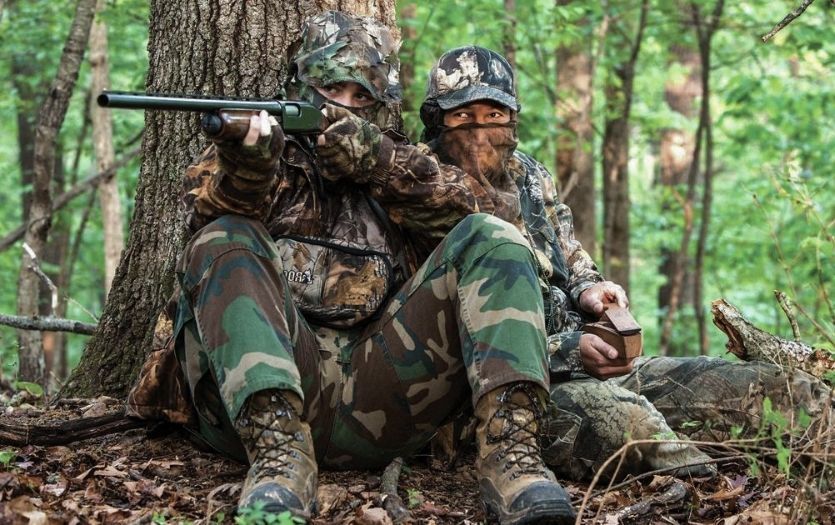
Now that you have an idea of the basics of turkey hunting, it's time to prepare for the hunt itself. In this section, we'll cover some important steps to take before heading out into the field.
Scouting the Spot
To ensure a successful hunt, pre-season scouting of the area prior to your outing is essential. By doing this you can identify potential roosts and feeding grounds that turkeys frequent as well as any looming barriers like creeks or sloping terrain.
You can use a trail camera or simply walk the area at different times of day to observe turkey activity. Once you've identified the prime spots, you can plan your hunting strategy accordingly.
Preparing Your Equipment
Before heading out into the field, it's important to make sure your equipment is in good working order. Check your shotgun or bow to ensure it's properly sighted, and make sure you have plenty of ammunition or hunting arrows.
Clean and test your calls and decoys to ensure they're working properly, and replace any that are damaged or worn out. You should also make sure your turkey boots and camouflage clothing are clean and free of any damage.
Preparing Yourself
Turkey hunting can be physically demanding, so it's important to prepare yourself before heading out for hunting. Start by getting in good physical shape, as hiking through rough terrain can be tiring.
You should also practice shooting and calling, so you're comfortable and confident in your abilities. And don't forget to prepare mentally as well - turkey hunting requires patience and persistence, so it's important to stay focused and positive.
Identifying Turkeys Safely
Before taking your shot, it is crucial to correctly identify the turkey to avoid any legal troubles and ensure responsible hunting. Here are some important tips to help you in the identification process:
- Observe Carefully: Take your time to study the physical characteristics of your game bird, such as its size, coloration, and unique features like beard length and spur length. Pay attention to the bird's behavior and distinctive vocalizations, which can provide additional clues.
- Know the Turkey Species: Familiarize yourself with the different turkey species in your hunting area, such as Eastern, Osceola, Rio Grande, Merriam's, or Gould's turkeys. Each species has distinct traits that can assist in accurate identification.
- Understand Legal Requirements: Be knowledgeable about the regulations and bag limits specific to your hunting location. Make sure you are targeting the correct species and gender allowed during the hunting season to comply with the law.
- Seek Expert Guidance: If you are uncertain about turkey identification or have any doubts, seek guidance from experienced hunters, wildlife officials, or local hunting organizations. They can provide valuable insights and help you sharpen your identification skills.
Remember, accurate identification is not only essential for legal compliance but also contributes to ethical hunting practices. Stay vigilant, be patient, and always prioritize safety when identifying turkeys before making your move.
Tips for a Successful Hunt
When you're finally ready to head out into the field, there are a few things to keep in mind to increase your chances of success.
First, try to be in your hunting spot well before dawn, as turkeys are most active in the early morning.
Place your turkey decoys strategically around your hunting spot. A combination of a feeding hen decoy (or in a breeding position) and a jake decoy near it is the most effective option to lure those prized gobblers.
Once you're in position, use calls to attract turkeys, and be patient - sometimes it can take a while for the turkeys to arrive.
When you do spot a turkey, take your time and make sure you have a clear shot. For successful shooting, aim for the bird's center mass - located slightly above its legs and at the point where the wing meets its body. Some hunters, especially bowhunters using guillotine broadheads, prefer head and neck shots for an instant kill.
Preparing for a turkey hunt requires careful planning and attention to detail. By scouting the area, preparing your equipment and yourself, and using some simple hunting techniques, you can increase your chances of success.
Techniques for Successful Turkey Hunting
Turkey hunting requires a combination of skill, patience, and persistence. In this section, we'll cover some advanced techniques and strategies to help you increase your chances of success.
Decoy Placement
One effective technique for turkey hunting is proper decoy placement. Start by placing the decoy facing away from your location, as turkeys typically approach from behind. This also allows you to have a clear shot at the turkey's vitals.
Consider using multiple decoys, as this can make your setup more realistic and attract more turkeys. And be sure to use different types of decoys, such as hens and jakes, to create a natural and varied setup.
Turkey Calling Techniques
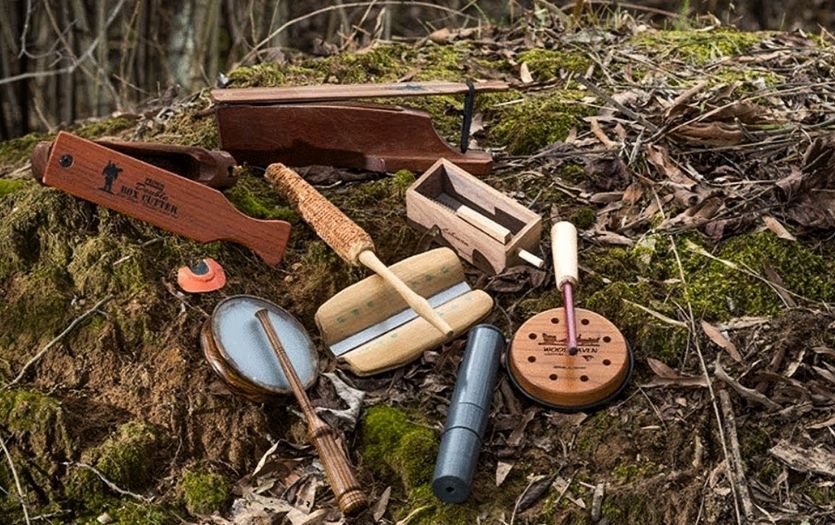
Make sure you're ready to attract the birds by practicing your turkey calls before the hunt. Using the right turkey calling techniques can also make a big difference in your turkey hunting success. Start by using soft and subtle calls, such as purrs and clucks, to attract nearby turkeys.
Once you have their attention, use more aggressive calls, like yelps and Cutts, to get them to come closer. Be sure to vary your calls, as turkeys can become wary of repetitive sounds.
When using a diaphragm call, make sure it fits properly and practice different sounds to master your technique. A mouth call will produce gentle, subtle sounds perfect for close-range calling while a slate call produces an array of realistic tones that are simple to use. For more distanced hunting, try out a box call that vibrates with loud and high-pitched noises ideal for far-off distances.
Draw dominant male turkeys with a gobbler call, producing rumbling and profound tones. To detect the presence of local turkeys, use locator calls imitating other animals that these birds react to--but be careful not to rely on this too heavily as it may startle the flock away! Instead, wait patiently and when turkeys hear your call, they will respond and reveal their location.
Hunting Strategies
Successful turkey hunting often requires a combination of different hunting strategies. For example, consider hunting from a turkey blind, as this can provide cover and concealment, as well as a comfortable spot to wait for turkeys.
Another strategy is to use a decoy to lure turkeys within range, and then move to a different spot to get a better angle for a shot.
If you're hunting with a partner, consider using a double-team strategy, with one person calling and the other waiting to take the shot.
Patience and Persistence
Ultimately, the key to successful turkey hunting is patience and persistence. Don't give up if you don't see or hear anything right away - it can sometimes take hours for turkeys to show up.
Be prepared to sit still and wait for extended periods of time, and don't be afraid to move to a different location if your current spot isn't producing results.
Shooting and Hunting Etiquette
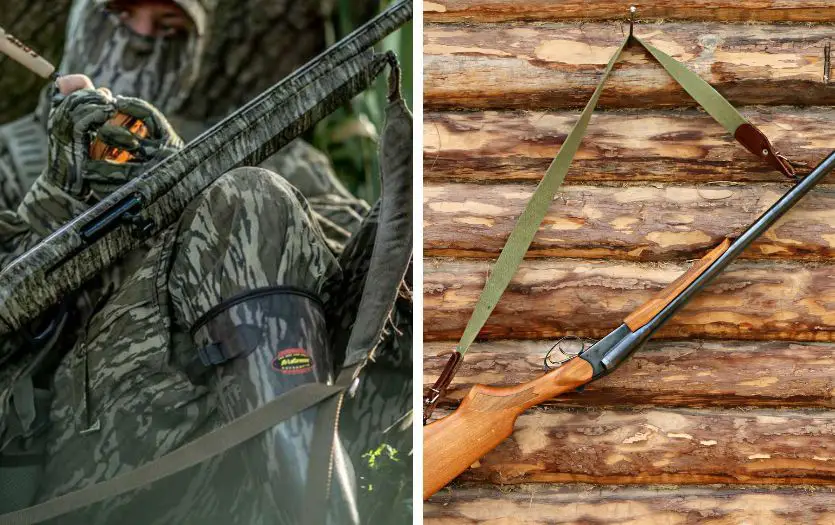
If you're new to turkey hunting, it's essential to understand the proper shooting and hunting etiquette to avoid accidents and ensure a successful hunt. Check out some of the key considerations for a turkey hunter.
Selecting the Right Firearm and Ammunition
Choosing the right firearm and ammunition is crucial for a successful and humane turkey hunt. Shotguns are the most common firearms used for turkey hunting, and the recommended gauge is 12 or 20. The choke of the shotgun determines the pattern of the shot, so it's important to choose the right choke for the distance you'll be shooting, which is usually around 30 yards.
When it comes to ammunition, tungsten is a popular choice. Even though some of the most popular pellets are made from a combination of copper and lead, it is best to avoid toxic lead. The recommended shot size for turkey hunting is between 4 and 6.
Proper Aiming and Shooting Techniques
Proper aiming and shooting techniques are essential for making an ethical and effective shot. Always make sure that your aim is clear and unobstructed, and avoid taking a shot if there's any chance of hitting another hunter or an unintended target.
When shooting, it's crucial to control your breathing and squeeze the trigger gently. Avoid flinching or jerking the trigger, as this can affect your accuracy and cause unnecessary suffering for the turkey.
Knowing the Right Time to Shoot
Knowing when to shoot is crucial for making an ethical and successful turkey hunt. Only take a shot when you're confident that you can make a clean and humane kill. It's important to be patient and wait for the turkey to present a clear and unobstructed shot.
Avoid taking a shot at a turkey that's out of range, as this can result in an injured bird that may suffer and die slowly. Always make sure that you're within the effective range of your firearm, and don't take a shot if you're unsure.
Etiquette When Hunting in a Group
When hunting in a group, it's important to communicate clearly and follow proper hunting etiquette to avoid accidents and conflicts. Always wear blaze orange clothing to identify yourself to other turkey hunters, and make sure that you know each other's positions and movements.
Avoid interfering with another hunter's hunt, and never take a shot at a turkey that another hunter is working on. If you see a turkey that another hunter has missed, wait for them to take another shot before taking your turn.
Ethical Considerations and Hunting Regulations
Ethical considerations and hunting regulations are essential for responsible and sustainable turkey hunting. Always follow local hunting regulations and obtain the necessary permits and licenses before hunting.
Respect the environment and avoid disturbing wildlife habitats. Take only the number of turkeys that you can use, and never waste any part of the bird. Remember that ethical and responsible hunting is essential for preserving our natural resources and ensuring the future of turkey hunting.
After the Hunt
Congratulations on a successful turkey hunt! Now that the hard part is over, it's time to think about what comes next. Properly handling and storing your game is essential to ensure that it is safe to eat and tastes great. Here are some tips to help you make the most of your post-hunt experience.
Field Dressing and Processing Turkey
After you've taken down your turkey, the first step is to field dress it. This involves removing the bird's feathers, entrails, and internal organs to make it ready for cooking. It's important to do this as soon as possible to prevent spoilage and bacterial growth, but just wait for the turkey to cool down, as this will enhance the tenderness.
It is best to first cover your turkey with a blazing orange cloth and bring it to your processing area. To field dress your turkey, start by plucking the feathers. You can do this by hand or with a specialized plucking machine. Once the feathers are removed, make a small incision with your hunting knife near the breastbone and carefully remove the entrails. Be sure to also remove the crop, which is a small pouch near the base of the bird's neck that stores food.
Once you have plucked and gutted the turkey, it's time to process the meat - unless, of course, you are planning to roast it in a traditional Thanksgiving feast. This involves removing the legs, wings, and breasts and cutting them into smaller portions. You can also choose to take the meat of the lower back region and grind them for use in burgers, sausages, or other dishes.
Proper Storage and Preservation of the Meat
After processing the meat, it’s important to store it properly to prevent spoilage. One option is to use a vacuum sealer and seal your meat in bags and keep them inside your freezer. You can use airtight containers if you don't have a vacuum sealer. Another option is to can or smoke the meat for long-term storage.
Celebrating the Hunt and Sharing with Others
One of the best parts of turkey hunting is celebrating the success of the hunt with others. Whether it’s a family feast or a gathering of hunting buddies, cooking and sharing the meat with others is a time-honored tradition.
Reflecting on the Experience and Lessons Learned
After the hunt is over, take some time to reflect on the experience and lessons learned. What worked well? What could have gone better? Use these insights to improve your hunting skills and make the most of future hunts.
Planning for Future Hunts
Finally, it’s important to plan for future hunts. Consider what you learned during this hunt and use that knowledge to make improvements for next time. Take note of what worked and what didn’t, and make any necessary changes to your gear, technique, or hunting strategy.
These are not commandments, yet by embracing them you can ensure that your hunting ventures turn out to be both pleasurable and profitable.
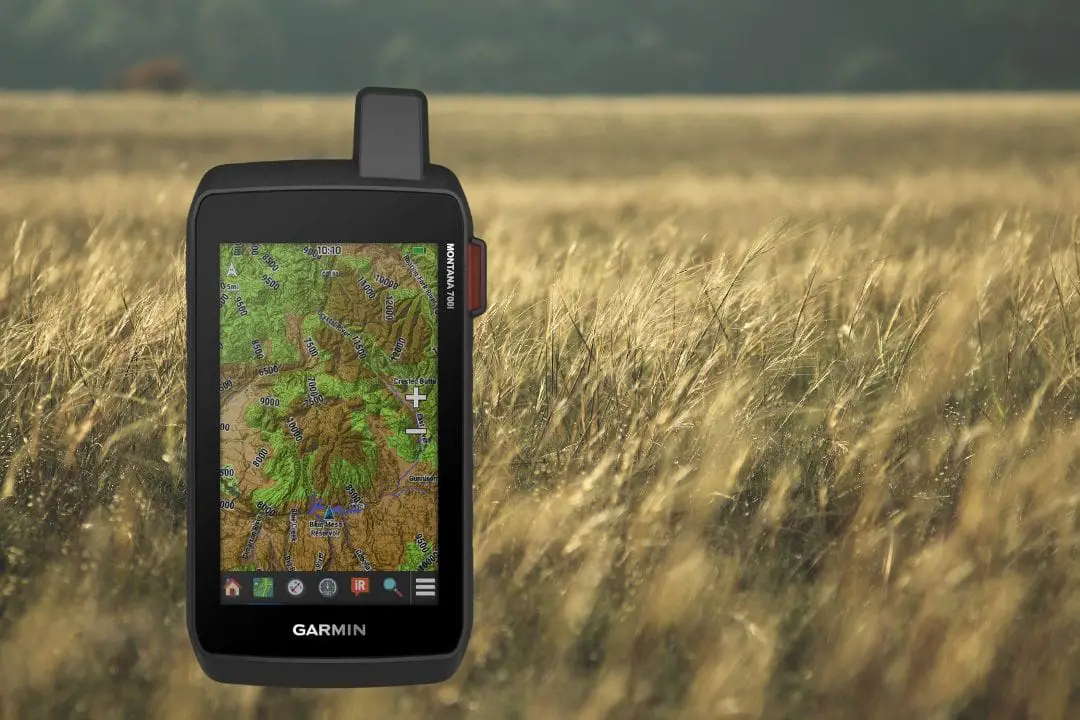
Frequently Asked Questions
Are you new to turkey hunting or just looking for some helpful tips to improve your success?
Here are some frequently asked questions and their solutions to help guide you on your next turkey-hunting adventure.
From selecting the right gear to ethical considerations, we've got you covered. So, let's dive into some of the most common questions asked by turkey hunters.
What time of day is best for turkey hunting?
The best time of day for turkey hunting is early in the morning, just before sunrise, or late in the afternoon, close to sunset. During these times, after they have roosted, turkeys are more active and vocal, making it easier for hunters to locate them.
It is also important to note that turkeys tend to move around more during the early morning and late afternoon hours in search of food, water, or mates. However, it's essential to check the local hunting regulations to ensure that you are hunting during legal hours.
Remember to be patient and keep your eyes and ears open, as turkeys can appear at any time of the day.
What is the best thing to hunt turkey with?
The best thing to hunt turkey with largely depends on personal preference and skill level. Some hunters prefer shotguns while others prefer archery equipment. Shotguns are typically recommended for beginners as they are easier to use and have a higher success rate.
However, experienced hunters may opt for archery equipment as it provides a greater challenge and can be more rewarding. Whichever equipment you choose, make sure to practice and become proficient with it before heading out on your turkey hunting trip.
What do you aim for on a turkey?
When it comes to turkey hunting, aiming is crucial. You want to aim for the turkey's head and neck area, also known as the "kill zone." This area is the smallest target on the turkey's body, but it's the most effective spot to aim for a clean and ethical kill.
But if you are not sure about the perfect aim and shooting at distances under 30 yards, you can hit the birds at the area where their wings attach to their body. Hitting this area will ensure that the turkey's vital organs are hit, resulting in a quick and humane kill. Remember to always be patient, and calm, and take your time when aiming to increase your chances of success.
What is the best bait for wild turkeys?
When it comes to wild turkeys, using bait is not legal in all states, so it's important to check the regulations in your area before attempting to use any kind of bait. However, some natural food sources, such as acorns, corn, and other grains can attract turkeys.
Some hunters also use decoys to attract turkeys, which can be effective when used in conjunction with natural food sources. Ultimately, the best approach is to scout the area beforehand to determine where the turkeys are feeding and to set up your hunting spot accordingly.
What signs to look for when turkey hunting?
There are a few signs you should look out for to increase your chances of success while hunting turkeys.
First, listen for gobbling sounds as they can indicate the presence of male turkeys. You should also keep an eye out for tracks, droppings, and feathers, which can give you an idea of the turkey's size, location, and activity.
Additionally, watch for scratched-up leaves and other ground covers where the turkeys have been foraging for food.
Another key sign to look out for is dusting sites, which are areas where turkeys gather to clean themselves. These are some of the signs to keep in mind when turkey hunting to increase your chances of spotting these elusive birds.
What do turkeys like the most?
Turkeys are known to be great foragers and delight in notably acorns, nuts, and seeds. When they're mating during springtime their diet includes newly-sprouted greens and other fresh vegetation.
But as summer approaches they transition to a healthier fare of berries along with small reptiles or bugs. And come autumn and winter turkeys usually turn back to nuts, grains, and fruits - all of which make the beloved acorn a go-to favorite for hunting them!
What is the best distance to shoot a turkey?
When it comes to turkey hunting, the best distance to shoot a turkey is typically within 40 yards. This is because beyond 40 yards, the accuracy and lethality of the shot decrease significantly, and you risk injuring the turkey rather than making a clean kill.
It's important to remember that turkeys have excellent eyesight and can quickly spot any movement or suspicious behavior, so getting within 40 yards without being detected can be challenging but crucial for a successful hunt.
Using a good turkey call and setting up in a strategic location can help you get in range for a clean shot.
Final Thoughts
I hope these spring turkey hunting tips have been helpful to you. Remember, preparation is key to a successful hunt, from selecting the right gear to scouting the perfect location.
When out in the field, stay patient and persistent, using proper techniques and etiquette to maximize your chances of bagging that big gobbler. And after the hunt, take the time to properly process and celebrate your hard-earned prize.
As someone who has spent countless hours in pursuit of these majestic birds, I can tell you there's nothing quite like the thrill of an early morning hunt for turkeys. So get out there and make some memories this Spring turkey season!

